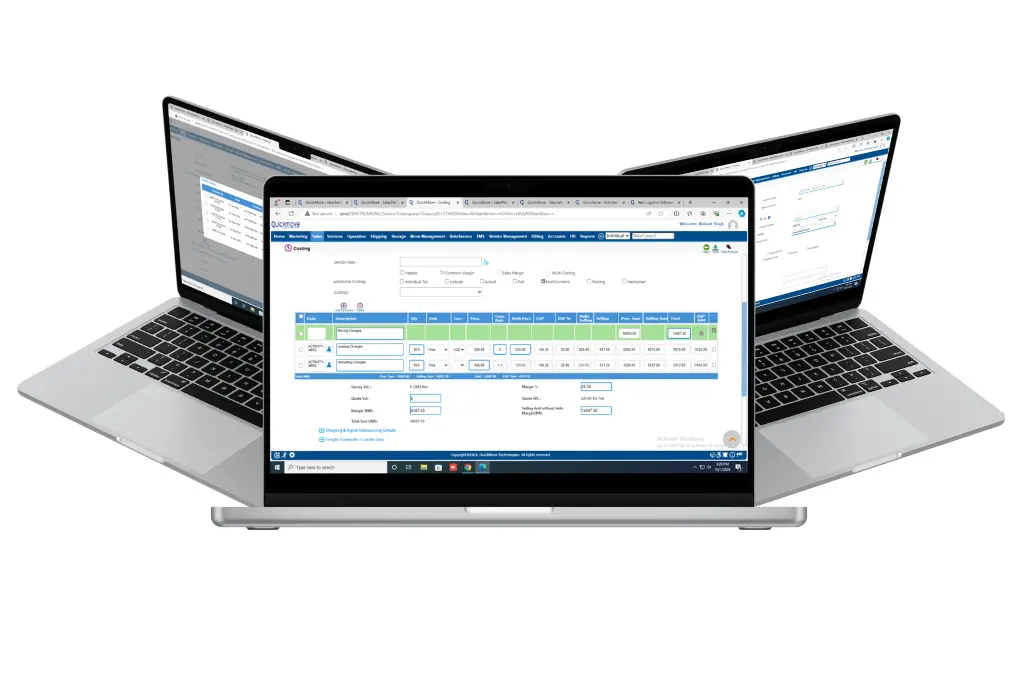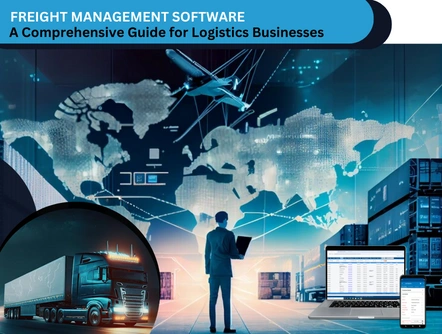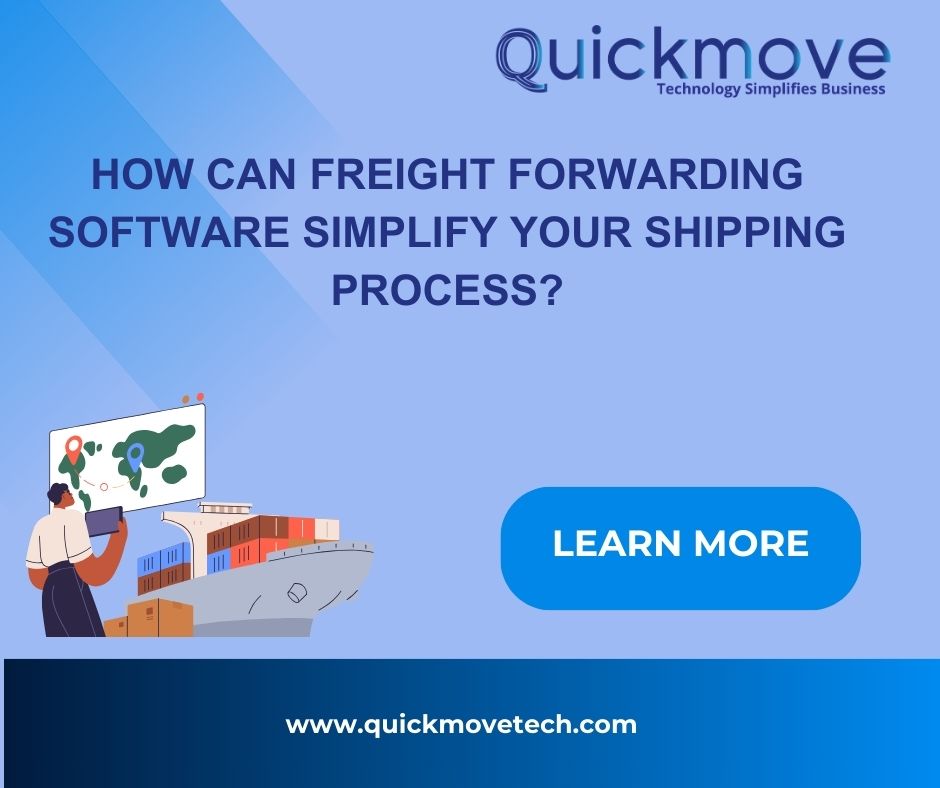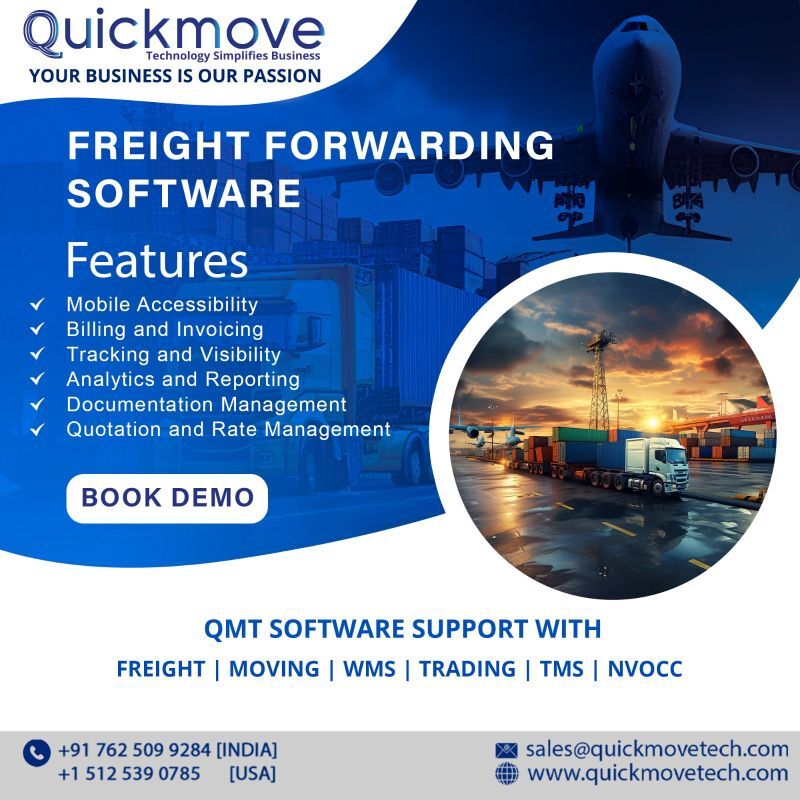Introduction
In today’s fast-paced world of logistics and supply chain management, efficiency and precision are paramount. This is where freight management software steps in as a crucial tool for businesses. In this comprehensive guide, we’ll explore what freight management software is, why it’s important, and the myriad benefits it offers.
What is Freight Management Software?
Freight management software, often referred to as transportation management software (TMS), is a specialized technology solution designed to streamline and optimize the end-to-end process of moving goods from one location to another. It encompasses various functions, from rate management and booking to tracking, customs clearance, and compliance.
Why is Freight Management Software Important?
Efficient freight management is the backbone of a successful supply chain. Here’s why freight management software is indispensable:
Benefits of Using Freight Management Software
- Cost Reduction: Freight management software helps businesses reduce transportation costs through optimized route planning, load consolidation, and better negotiation of freight rates.
- Enhanced Visibility: Real-time tracking and monitoring capabilities provide a clear view of shipments in transit, enabling timely interventions and minimizing disruptions.
- Operational Streamlining: Automation of repetitive tasks, such as paperwork and order processing, reduces errors and accelerates workflows.
- Compliance and Accuracy: Ensures adherence to trade regulations and customs requirements, reducing the risk of fines and delays.
- Data-Driven Decision-Making: Analytics and reporting tools offer valuable insights to make informed decisions and continuously improve processes.
Features of Freight Management Software
Freight management software offers a suite of features to facilitate efficient logistics operations:
- Freight Rate Management:
Managing and optimizing freight rates is a fundamental function of TMS. The software helps businesses negotiate and select the most cost-effective carriers and rates. - Freight Booking:
Efficiently book shipments with carriers, taking into account factors like delivery windows and capacity constraints. - Freight Tracking:
Real-time tracking provides visibility into the location and status of shipments, allowing for proactive issue resolution. - Customs Clearance:
Simplify the complex process of clearing goods through customs, ensuring compliance with import/export regulations. - Trade Compliance:
Stay up-to-date with ever-changing international trade regulations to avoid costly penalties and delays. - Freight Analytics and Reporting:
Access insightful data and reports to identify trends, areas for improvement, and cost-saving opportunities.
How Freight Management Software Can Help Businesses
Now, let’s delve into how freight management software benefits businesses:
- Reduce Freight Costs:
By optimizing routes, consolidating shipments, and negotiating better rates, businesses can significantly cut transportation expenses. - Improve Freight Visibility:
Real-time tracking and monitoring enable businesses to respond swiftly to disruptions and provide customers with accurate delivery information. - Streamline Freight Operations:
Automation reduces manual tasks, leading to increased operational efficiency and reduced errors. - Enhance Customer Service:
Timely deliveries and accurate information foster customer satisfaction and loyalty.
How to Choose the Right Freight Management Software for Your Business
Selecting the right TMS is crucial. Consider factors like your business size, industry, and specific needs. It’s advisable to seek solutions that offer scalability and integration with your existing systems.
Tips for Implementing Freight Management Software Successfully:
- Involve key stakeholders from the start to ensure alignment with your business goals.
- Provide adequate training to your staff to maximize the software’s potential..
- Continuously monitor and evaluate the software’s performance, making adjustments as needed.
In closing, freight management software is a game-changer for businesses looking to thrive in today’s competitive logistics landscape. By reducing costs, improving visibility, streamlining operations, and enhancing customer service, it offers a path to success in the world of transportation and supply chain management. Choose wisely, implement carefully, and reap the rewards of efficient freight management.
Additional Headings:
Types of Freight Management Software
Cloud-Based Freight Management Software
In today’s digital age, cloud-based freight management software has gained significant popularity. This type of software operates on remote servers, accessible through the internet, offering numerous advantages:
- Accessibility: Cloud-based TMS can be accessed from anywhere with an internet connection, providing flexibility for remote work and collaboration.
- Scalability: These solutions often allow businesses to scale their usage up or down based on their changing needs, making them suitable for both small and large enterprises.
- Cost-Efficiency: Cloud-based software typically requires lower upfront costs, as it eliminates the need for on-premise servers and infrastructure. Users often pay a subscription fee, making it budget-friendly.
- Automatic Updates: Software updates and maintenance are handled by the provider, ensuring that your system is always up-to-date with the latest features and security patches.
- Data Security: Reputable cloud providers invest heavily in data security measures, often offering robust encryption and backup solutions to protect sensitive information.
On-Premise Freight Management Software
While cloud-based solutions have gained popularity, on-premise freight management software remains a viable choice for some businesses. With on-premise software, the system is installed and operated from the company’s own servers and infrastructure. Here are some considerations:
- Control: On-premise solutions provide businesses with full control over their software and data, which can be crucial for companies with strict compliance and security requirements.
- Customization: On-premise software can be more easily customized to fit specific business processes and integration needs.
- Data Ownership:Companies have complete ownership and control over their data, which can be important for businesses that handle sensitive or confidential information.
- Initial Investment: On-premise software often requires a larger upfront investment in hardware, software licenses, and IT infrastructure.
- Maintenance Responsibility: Companies using on-premise software are responsible for system maintenance, updates, and security, which may require dedicated IT resources.
Choosing between cloud-based and on-premise freight management software depends on your business’s specific needs, budget, and IT infrastructure.
The Future of Freight Management Software
As technology continues to evolve, the future of freight management software looks promising. Expect to see developments in areas such as:
- Artificial Intelligence (AI) and Machine Learning: These technologies will enhance predictive analytics, enabling better route optimization and demand forecasting.
- Internet of Things (IoT): IoT sensors on shipments will provide real-time data on temperature, humidity, and location, improving cargo safety and quality control.
- Blockchain:Blockchain technology will increase transparency and security in supply chain transactions, reducing fraud and errors.
- Sustainability: Freight management software will increasingly focus on eco-friendly practices, helping businesses reduce their carbon footprint and comply with environmental regulations.
In conclusion, freight management software is an essential tool for businesses aiming to excel in logistics and supply chain management. Understanding the various types of software and staying informed about emerging trends will empower your business to make informed decisions and stay competitive in a rapidly evolving industry.
 Email Us
Email Us

 Freight Forwarding Software
Freight Forwarding Software Moving/Removal Software
Moving/Removal Software Warehouse Management System
Warehouse Management System Transport Management System
Transport Management System Customer Service Portal
Customer Service Portal Move Survey Quote Pro
Move Survey Quote Pro Digital Logistics Inventory App
Digital Logistics Inventory App

